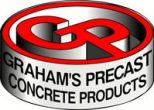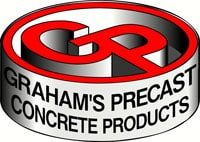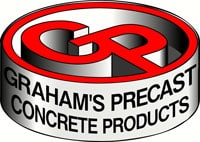8 Things To Consider Before Installing Concrete Troughs
Are you considering adding concrete troughs to your livestock management system? This decision, while practical, involves more than just purchasing and placing. Understanding the factors that affect the successful installation and long-term use of concrete troughs is essential for any farmer, property owner or agricultural professional. Let’s explore these critical considerations to ensure that your investment into concrete troughs meets your operational needs and enhances your livestock management.
1. Assess The Size And Capacity Requirements
When you plan to install concrete troughs, you should assess the appropriate size and capacity. The number of animals you have, their species and water consumption rates are all important. For example, cattle require more water per day compared to sheep.
Additionally, consider the growth of your herd or flock. A trough that suits your current needs might need to be improved in a few years. By accurately estimating these factors, you can ensure that all animals have constant access to fresh water without incurring unnecessary costs for capacities that exceed your needs.
2. Consider The Durability Of Concrete
Concrete troughs are favoured in agricultural settings due to their durability and longevity.
Factors Enhancing Durability
- Weather Resistance: Concrete’s resilience against varying weather conditions ensures it does not deteriorate quickly, maintaining structural integrity from scorching heat to freezing temperatures.
- Impact Resistance: The robust nature of concrete withstands frequent use and abuse by livestock, resisting scratches and impacts that might compromise other materials.
3. Installation Process
Proper installation is crucial to the functionality and lifespan of concrete troughs.
- Site Accessibility: Select a site that is accessible for both installation equipment and livestock. Consider future accessibility for maintenance and inspections.
- Water Connection: Proper plumbing and water connections are essential. Inadequate water flow can lead to issues with water quality and supply.
- Expert Installation: Utilising skilled professionals for installation can prevent common pitfalls that may lead to costly repairs or replacements in the future.
4. Evaluate The Location For Installation
The location of your concrete troughs plays a significant role in their effectiveness and longevity. Here is what to consider:
- Elevated: To prevent waterlogging and ensure easy drainage.
- Centralised: To allow equal access for all animals, reducing crowding and ensuring consistent water intake.
- Protected: Avoid areas prone to excessive natural wear or potential contamination from nearby activities.
5. Maintenance Needs
Concrete troughs require regular maintenance to ensure they remain clean and in good working order.
Key Maintenance Practices
- Regular Cleaning: Algae, debris and other contaminants can affect water quality, requiring routine cleaning.
- Structural Checks: Regularly inspect for any signs of wear, such as small cracks or erosion at the base, which could lead to larger issues if not addressed promptly.
6. Water Quality And Safety
The health of your livestock is directly influenced by the quality of the water they consume. Ensuring that this water remains clean and safe is paramount for their well-being and your peace of mind.
- Filtration Systems: Consider installing filters to maintain clean water.
- Non-Toxic Materials: Use only safe, non-toxic materials for any repairs or treatments to prevent contamination.
In addition, Regular Monitoring and Testing of water quality can detect issues before they become serious, allowing for timely interventions.
7. Cost-Effectiveness Over Time
Investing in concrete troughs is cost-effective over the long term. Their durability reduces the need for frequent replacements and minimal maintenance requirements keep ongoing costs low. Additionally, the improved health of your livestock from consistent, clean water access can lead to better productivity and fewer veterinary bills, which translates to better overall profitability.
Furthermore, the resilience of concrete troughs to varying weather conditions avoids the additional costs linked with seasonal damage repair, ensuring an economical choice for all climates.
8. Environmental Impact
Choosing concrete troughs for your livestock also supports a more sustainable and environmentally responsible farming practice. Concrete, as a material, offers longevity and durability, which translates to less frequent replacements and reduced waste production.
Longevity
The long lifespan of concrete reduces the replacement frequency, thus minimising waste.
Recycling
At the end of their life, concrete troughs can be broken down and recycled, helping to reduce the environmental footprint of your farming practices.
From Planning To Installation: Let Us Help You With Your Concrete Trough Needs
Installing concrete troughs can effectively manage water resources for agricultural, industrial or residential purposes. By considering these factors, you can ensure that your investment in concrete troughs is sound and will serve its intended purpose effectively and efficiently.
At Graham’s Precast, we are dedicated to providing high-quality concrete troughs that meet the specific needs of your livestock and farming operations. Choosing our concrete troughs means investing in quality and sustainability. Our products are designed to meet diverse needs, ensuring you get the best in both functionality and environmental responsibility. If you’re ready to install concrete troughs, remember these considerations for trough installation. Contact us today and let us help you enhance your agricultural operations with efficiency and expertise.






